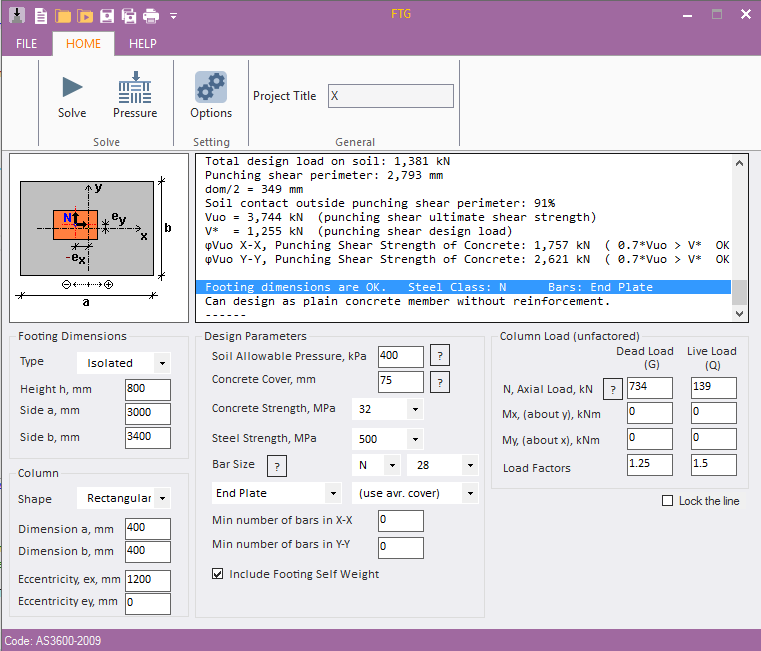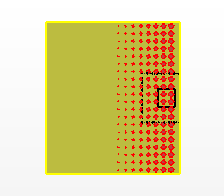FTG Overview
FTG is a software for the design check of a pad footings and strip footings. Through a simple user interface footings are checked for bearing, bending, beam shear and punching shear as applicable, all with the click of a button.
FTG builds on its predecessor Footing, which has been used for 15 years by Australia’s consulting engineers, forming an integral part of their daily design, whilst incorporating the local design practices and traditions.
For the isolated pad footing, biaxial bending and uneven distribution of soil pressure is automatically considered, calculated and checked, and the distribution of the soil pressure is plotted.
The reduced capacity along the reinforcements development length is also fully considered depending on what detail is used: straight bar, hooked bar or bar with end plate.
Soil pressure is checked against the soil’s bearing capacity, and FTG will automatically check if the footing can be detailed as a plain concrete member without any reinforcement to the requirements of AS3600.
A comprehensive design check against the requirements of AS3600 can be implemented in FTG with all checks performed with the click of a button.
Features

AS 3600 - 2018
Includes the latest version of Australian Standards for design of concrete structures.

Isolated Pad Footing
Check isolated pad footing under biaxial bending and view the pressure distribution.

Continuous Strip Footing
Check continuous strip footings with eccentricity.

Flexure Design
FTG performs a flexure design check on the footing if a section is put into bending.

Mass Footing Check
FTG will check if the load is transferred to the soil by bearing only (without bending) and if it can be designed without any steel.

Beam and Punching Shear Check
Beam and punching shear checks are automatically performed.

Reduced Bar Capacity Along its Development Length
The reduced capacity fsy along the bars development length is calculated based on end detail used: straight, hooked or end plate.

Soil Pressure Check
The applied pressure is checked against the soil bearing capacity.





